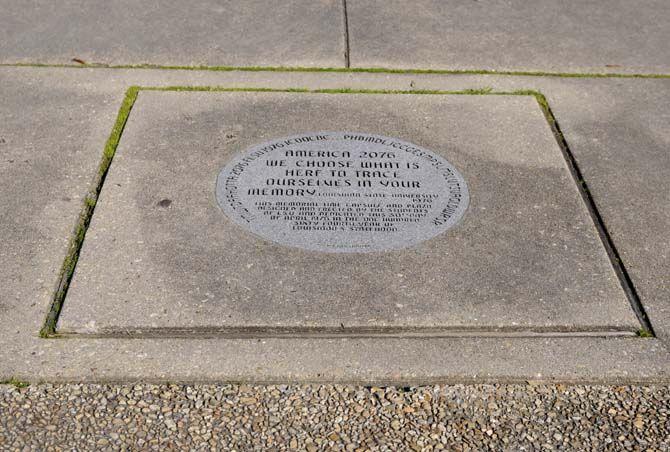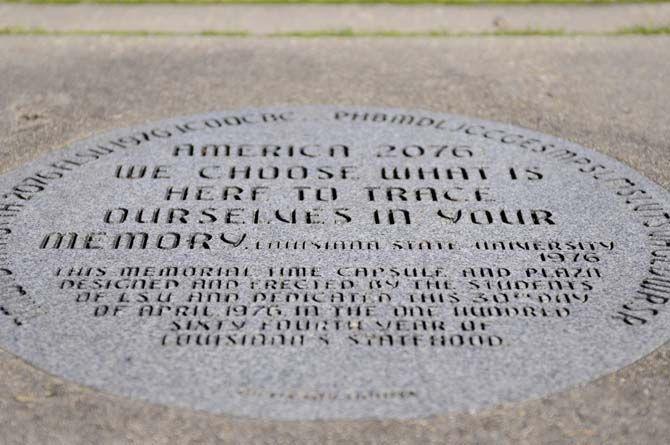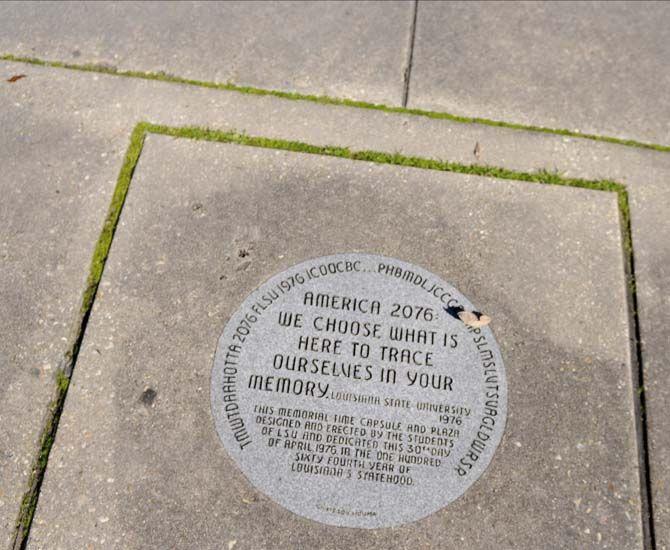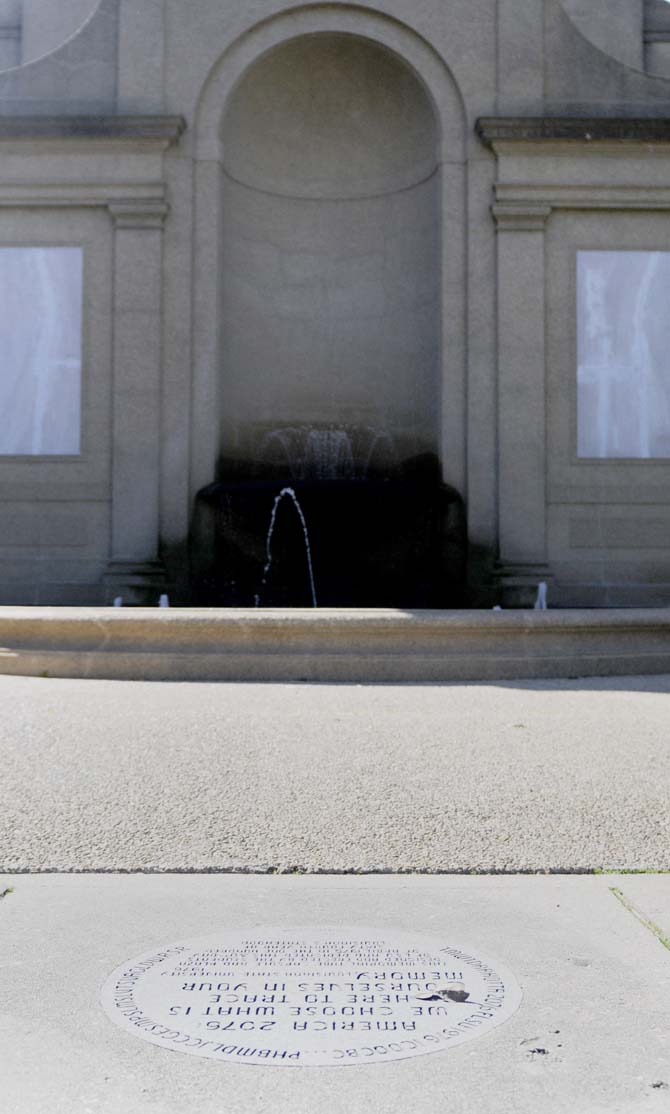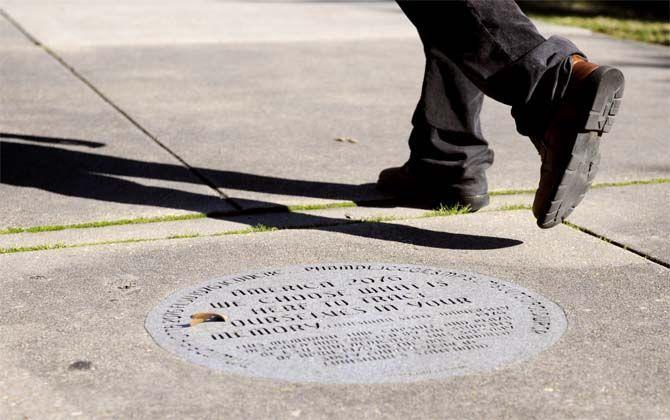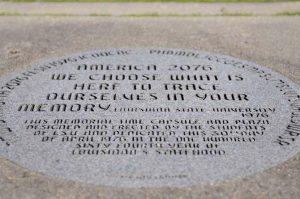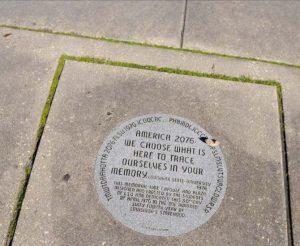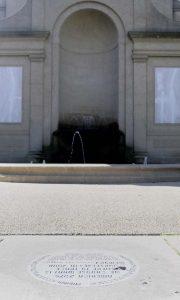The University is one of the most historic aspects of our centuries-old city, and its past students and faculty have dedicated four time capsules full of memoirs from different decades to the future.
For decades the campus community has contributed to several time capsules and people from different generations all have the same goal in mind — to give the future LSU community a peek into life as it was.
The first known capsule on campus was buried in 1967 as part of a program called “World of 2067.”
According to a May 10, 1967 news release from the Student Union, the program was meant to “give a preview of life during the first half of the 21st century.”
The 1967 capsule is buried in front of the Student Union and contains a microfilm of students’ predictions of the future generation, according to a 2010 press release from the University’s Media Center. The capsule itself is enclosed in a concrete cylinder weighing about 1,000 pounds.
Mass communication freshman Ellen Farmer said she thinks the students’ predictions are likely unrealistic.
“I think they’ll talk about flying cars and teleporters,” Farmer said. “I think their ideas will be very similar to what was in “The Jetsons” cartoon.”
The second capsule, located in front of the fountain near Dodson Auditorium in the Quad, was buried April 30, 1976 to commemorate the 200th anniversary of the nation, according to the Media Center’s news release. The lid of the capsule bears what looks like a coded text — TMWTDAAHOTTA 2076 FLSU 1976 ICOOCBC … PHBMDLJCCGESMPSLMSLVTSVAGLDWRSR.
The 1976 capsule was buried at a time of turmoil in America — the country was turning the corner of the Watergate presidential scandal and the Vietnam War was coming to a close.
Farmer thinks the items in the Dodson capsule are probably reflective of the time period. She said students in 2015 could learn a lot from the capsule.
“Students today know about the ‘70s from history class, but I think it would be interesting to see more first-hand material,” Farmer said.
Political science junior Donald Dey said he would be really interested to look at the contents of the 1976 capsule.
“I want to say they put in more patriotic-type stuff because it was such a big celebration of the country,” Dey said. “Probably an American flag and maybe vinyl CD’s and other things that would be fun to look at.”
The capsule is scheduled to be opened in 2076.
University ROTC built and buried a third capsule in 1999 as a part of LSU Salutes, a celebration that honors all war veterans, particularly those who attended the University and participated in ROTC. It is located in the shadow of the Memorial Tower and is set to be opened in 2050.
There is little known information about the 1999 capsule other than its open date, according to the University’s military science archives.
Farmer said she guesses the ROTC capsule didn’t get as much publicity because it was for a more sensitive cause and the contents probably consist of war memorabilia, including photographs of veterans.
The burial of the most recent time capsule kicked off homecoming week of 2010, dedicated to the University’s Sesquicentennial anniversary.
The Sesquicentennial capsule was buried on Monday, Nov. 8, 2010 under the oaks of the Parade Ground and is scheduled to be opened on the University’s 300th anniversary in 2160.
Because this capsule is fairly recent, Farmer said University students now would likely remember the majority of the events, people and news inside the capsule, but when it is opened in 2160, people will view it as a simpler time.
“I think our generation will be remembered as the beginning of the technological revolution, [but] in 150 years I think the students will think our society was very simplistic because I’m sure technology will be very sophisticated,” Farmer said.
Dey said he would recognize a lot of what is probably in the 2010 capsule because it was buried so recently and much of the pop culture is the same.
Though the actual causes of burying each capsule were different, Dey said he thinks the overall theme remains the same throughout the years.
“I think people bury time capsules as part of the idea that people like to be remembered. They think the future is going to be way different, so they want the future to see the stuff they had then,” Dey said.
University time capsules leave messages for future generations
February 18, 2015
A buried time capsule from the year 1976 is located in front of the Dodson Auditorium water fountain on Monday, Feb. 9, 2015.



